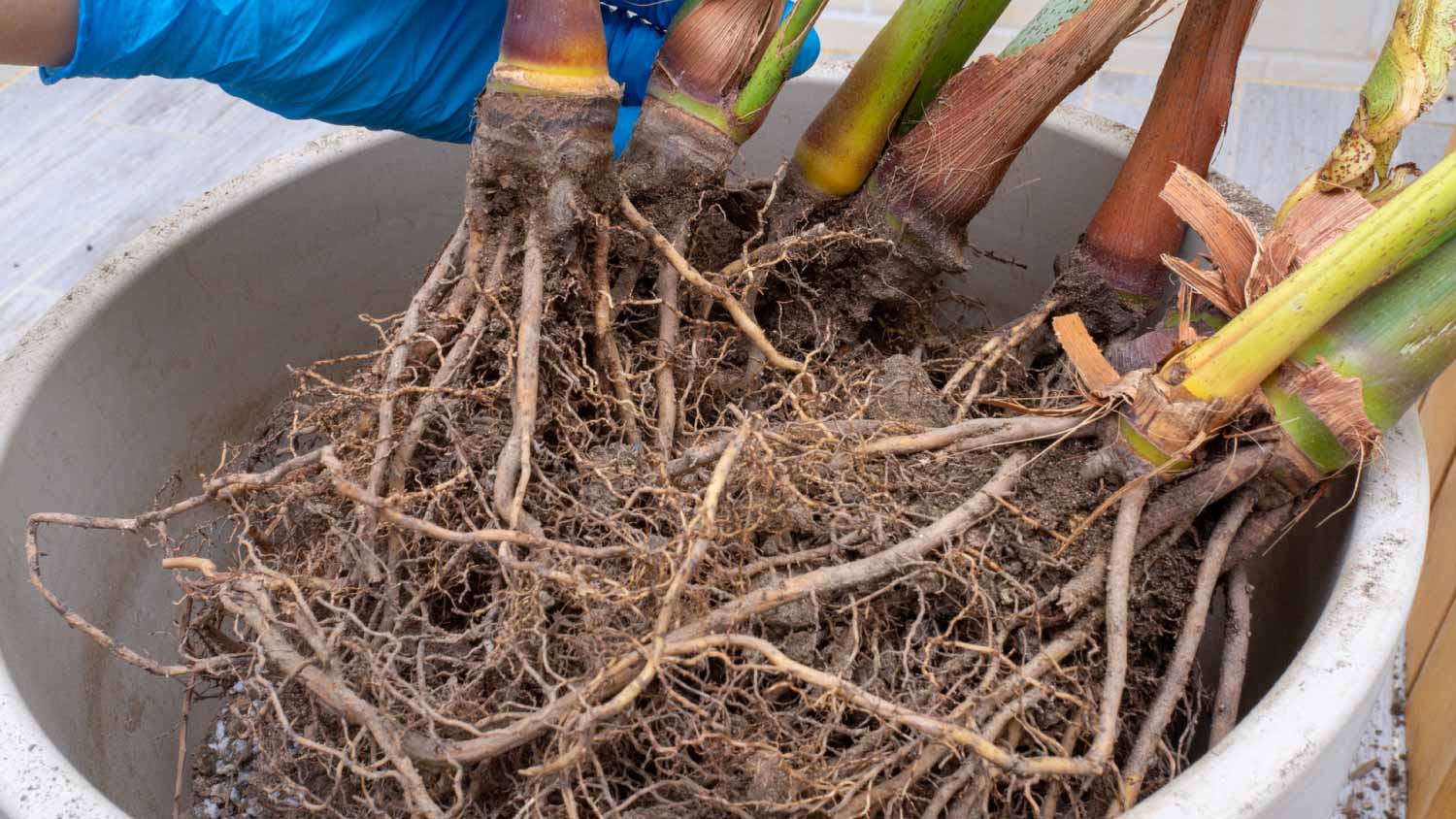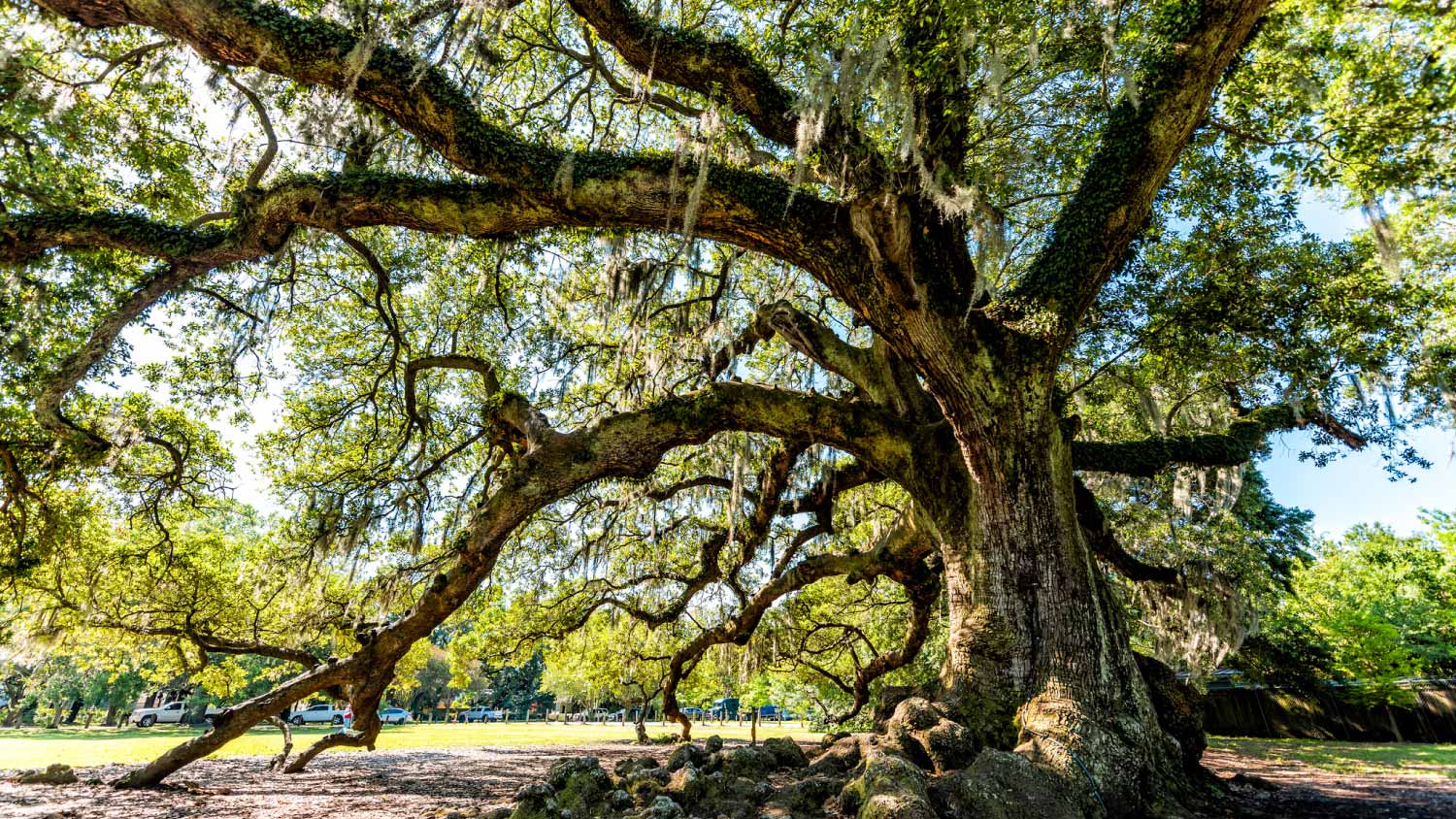
Trimming your bushes is one of the less costly aspects of landscaping, and it’s helpful to bundle many trimming services together to save money.
Keep your palms happy and healthy by knowing what signs to look for and what treatments to use


Prevention is more effective than cure for most palm tree diseases.
When removing an infected tree, get the whole thing, including fallen foliage, stump, and root system.
Watering at ground level with no splashback is the best way to prevent the spread of soil-borne pathogens.
Palm trees are pretty easy to care for. But, even though they're low maintenance, they're still susceptible to several palm tree diseases, including fungal and bacterial infections. One of the best ways to keep your palms free of disease is to keep them healthy by providing the right nutrition and environmental conditions. Here’s a look at 10 common palm tree diseases and how to treat and prevent them.

There are many different leaf spots and leaf blights, but the symptoms and treatments are generally very similar. Fungal pathogens cause leaf spot in palm trees. While all palms are at risk and should be considered potential hosts, juvenile trees and weaker, sicklier trees are most at risk.
| Characteristic | Description |
|---|---|
| Appearance | Small, wet, deep green lesions on tree leaves that quickly change colors (yellow, red, brown, or black). |
| Lesions may develop necrotic tissues - outer rings different in color than the lesion. | |
| Size of the legion depends on the pathogen causing the disease. | |
| Prevention and Treatment | Early intervention is critical. |
| Prune all affected palm fronds, even if a blade has few spots. | |
| For severe and widespread disease, apply a copper fungicide spray. | |
| If using palm fruits for food, you may only use copper fungicides. |
Caused by the fungus Ganoderma zonatum, ganoderma butt rot attacks the trunks of palms up to 4 inches above the ground. It inhibits the plants' ability to move water up the trunk by infecting the woody tissue and blocking the structures that transport water. This is not a soft rot so, although infected, the trunk does not develop soft spots.
| Characteristic | Description |
|---|---|
| Appearance | Inspect tree for the following symptoms: withering fronds, stunted new growth, yellowing leaves, pale leaves, weakened trunk, and root rot. |
| Overall decline in health | |
| Palm trunk may collapse. | |
| Palm head may fall off. | |
| Prevention and Treatment | Severe disease that has no cure |
| Remove all remnants of the infected trees (root systems, stumps, decaying foliage) to control spread of disease. | |
| Ganoderma zonatum can survive for many years in the soil without a host. | |
| Avoid planting palm trees in the same area. |

Bacterial or fungal pathogens can cause bud rots and most commonly attack after heavy rains or tropical storms.
| Characteristic | Description |
|---|---|
| Appearance | Lack of new crown growth is the first sign of disease. |
| Other symptoms include: wilting and color-changing spear leaves, black lesions, slimy buds, and foul odor. | |
| In severe cases, the main frond can easily be pulled from the bud. | |
| Prevention and Treatment | No cure once the disease has progressed |
| Remove and destroy affected plants. | |
| Apply copper fungicide to remaining palms with no visible signs of disease. |
Caused by the fungus Fusarium oxysporum, fusarium wilt causes brown, wilted fronds.
| Characteristic | Description |
|---|---|
| Appearance | Uneven yellowing leaves on one side of the tree or leaf, causing partial death. |
| Brown leaves are unlikely. | |
| Depending on size and health, the palm can die in a few months or survive up to a year. | |
| Prevention and Treatment | No cure |
| Remove all infected parts of the palm, including root systems. | |
| Avoid planting new palms in the same spot since fusarium wilt lingers in the dirt. |

Lethal yellowing is caused by a microorganism called phytoplasma and is spread by planthoppers, a common palm tree pest. To accurately identify lethal yellowing, you need to observe the disease progression and combination of symptoms, as no single symptom is enough to give you an accurate diagnosis.
| Characteristic | Description |
|---|---|
| Appearance | Falling fruit is the first sign of disease. |
| Fallen fruits will have black or brown, water-soaked patches where the fruit was connected to the tree. | |
| Inspect palm for flower necrosis—flowers wilting and turning black from the tips before dying. | |
| Leaves begin to yellow after fruits fall and flowers die. | |
| After two-thirds of the foliage has turned yellow, the apical meristem dies and the tree follows. | |
| Prevention and Treatment | No effective treatment once disease sets in. |
| Remove and destroy the tree. | |
| Antibiotic injections, specifically oxytetracycline, injections, into the roots may provide a cure, although there's no guarantee. | |
| It’s best to remove infected trees a replant a variety that’s resistant to lethal yellowing. |
Pink rot is an opportunistic disease that tends to attack already weakened or damaged palms. It can also infect areas damaged by aggressive pruning, as palm trees can't repair their own woody tissues. This fungal disease causes stunted growth, deformations, and leaf spots.
| Characteristic | Description |
|---|---|
| Appearance | Pink spores are the distinguishing feature of pink rot disease. |
| Other signs of pink rot include: leaf spots, petiole and rachis blights, decay, sheath rot, bud rot, and trunk rot. | |
| In severe cases, a brown, syrup-like substance oozes from infected areas. | |
| Prevention and Treatment | No cure |
| Prevent pink rot by keeping the palm healthy. | |
| Apply a copper fungicide and a barrier spray after pruning to protect wounds. |

Caused by the fungal pathogen phaeoisariopsis neowashingtoniae, diamond scale produces large numbers of small, diamond-shaped fruiting bodies on the leaves of afflicted palms. The disease rarely causes tree death, but it does weaken the tree and make it susceptible to other, more dangerous diseases and infections.
| Characteristic | Description |
|---|---|
| Appearance | Water-soaked lesions on leaves are the first sign of disease to appear. |
| Shortly after, fungal fruiting bodies start to form with a black stroma. | |
| As the stroma grows, the area around the fruiting body turns yellow. | |
| Prevention and Treatment | Prune away affected foliage to prevent spread. |
| Keep your plants as healthy as possible. | |
| If severely infected, remove trees and replant diamond-scale resistant varieties. |
Sooty mold is a fungal disease that doesn't directly attack the palm. It's caused by aphids, mealy bugs, and scale insects who feed on the palm leaves and leave behind honeydew, a sweet, syrupy substance, on which sooty mold quickly takes hold.
| Characteristic | Description |
|---|---|
| Appearance | Unsightly black, sooty spots appear on the palm leaves. |
| Sooty spots don’t cause much harm, but indicate that your tree has a significant insect infestation. | |
| Prevention and Treatment | Wipe affected areas with a damp cloth or a solution of mild soap and water. |
| Removing spots is only a temporary solution. | |
| The only way to eliminate sooty mold is to remove the disease-carrying pest. | |
| Keeping your plant healthy can help it withstand pests and diseases. |

Root rot isn't strictly a disease. Instead, it's a preventable problem caused by consistent overwatering or poorly draining soil.
| Characteristic | Description |
|---|---|
| Appearance | Diseased trees will start to rot at the base. |
| Other symptoms include: soft, mushy roots, yellowing leaves, and stunted new growth. | |
| Prevention and Treatment | If caught early enough, moving a small palm can help save it. |
| Dig up the palm and cut away all infected roots. | |
| Cut as close to the root ball as possible without damaging it. | |
| Replant the tree in another spot with good drainage. | |
| To promote new root formation, apply a generous amount of rooting hormone to the newly planted palm. |
Caused by thielaviopsis paradoxa, this fungal trunk rot causes trunk collapse and tree death. This particular fungus infects wounds in the tree's trunk.
| Characteristic | Description |
|---|---|
| Appearance | A “bleeding” stem is the key symptom of thielaviopsis trunk rot. |
| Infected roots will appear black. | |
| Other symptoms include yellowing, stunted growth, dull appearance, and eventual death. | |
| Some trees may not show symptoms of disease until root systems are overtaken by it. | |
| Thielaviopsis is often misdiagnosed for nutrient deficiency. | |
| Prevention and Treatment | No cure |
| Remove the infected palm tree as soon as possible to prevent spread. | |
| Avoid wounding the tree’s trunk. | |
| If you mistakenly cause trunk injury, apply a fungicide over the area to prevent fungal infections. |
Aside from providing the right nutrition and environmental conditions, there are a few other things that you can do to reduce the chances of your palms getting infected.
You should also practice proper tool sanitization, cleaning the blades of pruners, for example, thoroughly between uses to reduce the risk of spreading diseases from one tree to another.
When you water, don't let the soil splash up onto the palm foliage, as soil-borne pathogens can quickly infect the trees this way. Irrigate low to the ground or use drip irrigation.
Fertilize your palm trees adequately, using a high-quality product, but don't over-fertilize, as this can cause additional problems.
Give your palms plenty of room. Don't crowd them. Proper palm spacing ensures adequate airflow, which is important because it creates a less hospitable environment for fungal spores that like dark, damp spaces.
Prune palm trees conservatively at the right time of year, and avoid injuring the trunk.
If you’re concerned about the health of your palm tree, a palm tree specialist near you can assess it and suggest a treatment plan to keep it healthy.
From average costs to expert advice, get all the answers you need to get your job done.

Trimming your bushes is one of the less costly aspects of landscaping, and it’s helpful to bundle many trimming services together to save money.

It’s important to remove troublesome stumps: Here’s everything you can expect from stump grinding costs for your next landscaping project.

Get a clear estimate of palm tree maintenance cost, including trimming, fertilization, and pest control, so you can keep your palms healthy and your budget on track.

Wondering how to kill oak roots but not trees? Follow these 6 tips to learn the best ways to handle oak roots without harming the tree itself.

Arborists define Dutch elm disease as one of the most destructive diseases a tree can catch. Here’s what you can do—from spotting symptoms to treatment.

The upkeep and care for your trees should sometimes be left to a professional. Learn all the reasons why so you know when to call an arborist.